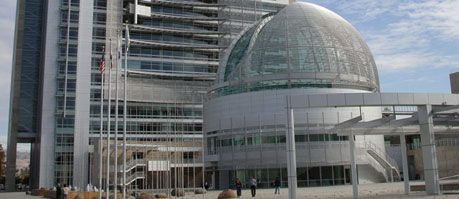
Santa Clara’s Agnews State Hospital served mentally ill patients from 1885 until 1977, when it was closed following the passage of the Lanterman Act.
A stranger attempting to lure a three year old away from the child’s older sister with candy is odd, not to mention, bold. For the stranger to then follow the two children into their home and try to pry the younger child from her mother’s arms is unbelievable. Although this might sound like a nightmare, this scenario actually took place last week in San Jose. The stranger is a woman whom suffers from mental illness and was subsequently arrested.
We come in contact with people suffering from mental illness every day. Many people who suffer from mental illness can function quite well under medication and psychiatric supervision. However, there are others with mental illness who are unable to function well or cannot fit in under societal norms because they experience delusions. For example, some people who have bipolar disorder can function and be fully employed and provide shelter for themselves and family. On the other hand, people who suffer from schizophrenia are usually unable to work but may be fortunate enough to be cared for by family or perhaps in a group home. Unfortunately, many mentally ill people are homeless.
In 1963, Pres. John F. Kennedy sent a special message to Congress to replace mental institutions with foster-home services. At the state level, Gov. Ronald Reagan was largely responsible for the deinstitutionalisation of facilities for the mentally ill. In my view, their decisions have contributed to the lack of care for mentally ill people in our society and have caused many to become homeless. As a result, we see many mentally ill people living in parks and creek beds within our neighborhoods.
Mental illness is a complex issue and a difficult one for police departments to deal with on the street level. On one hand, we want to help those who truly cannot help themselves, which includes individuals with mental illness. On the other hand, like in the example I stated above, when a crime is being committed and/or about to be committed, and a call for service comes from a resident who sees someone doing something “weird” or “threatening,” police respond. These calls are risky and may require the use of physical force by police and sometimes deadly force due to threatening behavior from the suspect towards police.
I believe that if we brought back institutions for the mentally ill that many of these encounters would not happen. I am well aware that there is a cost to provide these services, however, the cost of not providing them is higher since there is the cost for police, ambulance, increased public health care costs, etc… Personally, I feel tax revenues that go to people who truly cannot help themselves is a good use of our tax dollars. (Similarly, I view Social Security as a tax that I pay for existing retirees with no expectation of actually receiving the benefit myself.)
What has replaced a centralized institution for those that suffer from mental illness are disparate group homes often run as a business where proper supervision is not provided. These homes often upset neighbors with the occupants’ strange behaviors, like talking to themselves and personal appearance, in part since proper medical supervision is not provided.
Those that are truly mentally ill are not people we should throw away but rather the challenge is how do help them even though they may decline assistance? How can someone who is unable to reason coherently be able to opt out of assistance that could help them?
Understanding that this is a state/county issue, as with most everything else, it all rolls down hill to cities. I remember one of the reasons I voted for Al Gore in 2000 was that Tipper Gore, his wife at the time, was an advocate for the mentally ill. Also, this issue can put partisan politics aside when Republican Senator Pete Domenici and now deceased Democratic Senator Paul Wellstone collaborated on federal legislation regarding mental illness. The side story is that both Senators had a brother that suffered from mental illness.
This blog is an observation of where state policy does not provide for the needs of mentally ill people and as a result, puts undo pressure at the city level.


